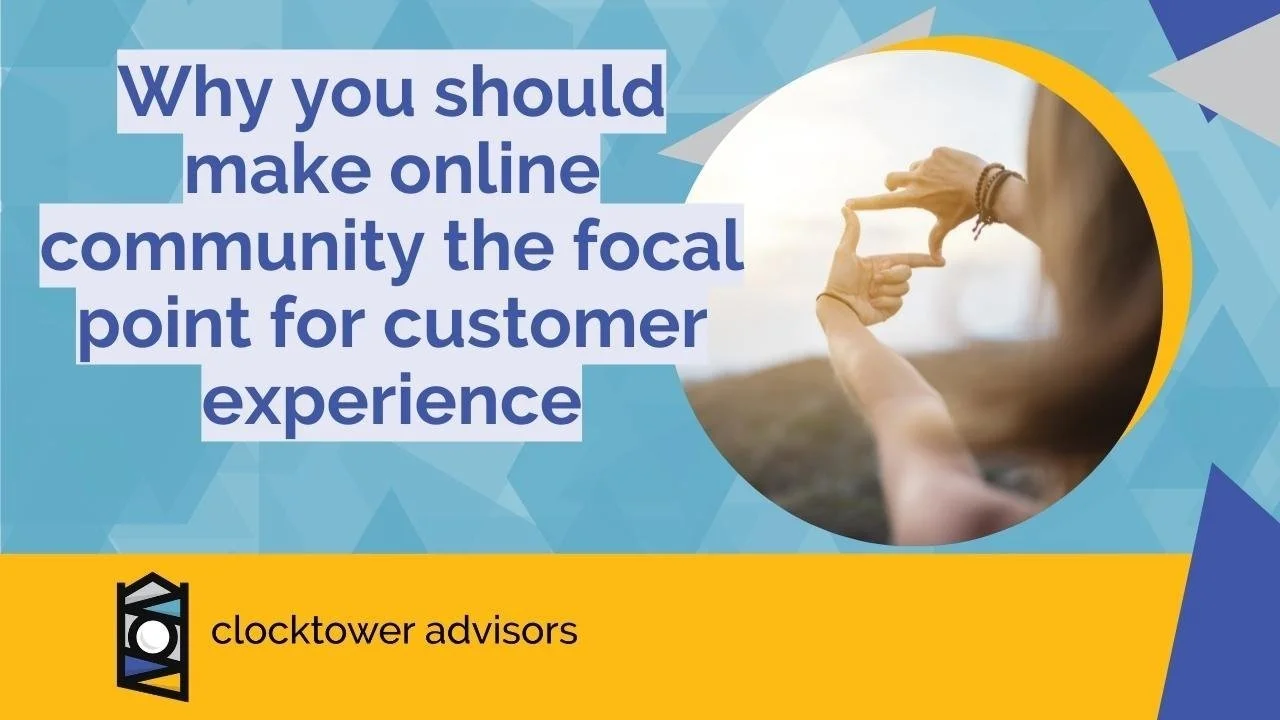Why you should make online community the focal point for customer experience
Frustrated customers tend to go away.
In Altimeter’s report on the Customer Service Cloud, principal analyst Charlene Li makes the point that customers see an organization’s brand as a single, monolithic entity. They get (easily) frustrated when they forced to recount the same issue in multiple places, such as on a phone call and on the company’s contact page, for instance.
Li’s report underscores the importance for organizations to reinvent how customer service is organized. Organizations need to strive to make customer experiences more seamless and to make information sharing more ubiquitous across the various departments of an organization.
Online communities in the form of dedicated online platforms are a prime place where these interactions can be brought together. By that I do not mean Facebook or LinkedIn Groups.
From an internal community for employees, information about a problem or service issue can be shared seamlessly across departments, eliminating silos and reducing customer frustrations. LumApps is a great example of an internal social network and employee experience platform.
From an external community perspective, customers can be directed from various online social outposts like Twitter or Facebook, into a customer-facing community where commonly encountered issues can be addressed with FAQs, where company and peer-based help can get involved, and where ideas for product or process improvement can be suggested. Private, externally facing social networks include inSided, Disciple, Vanilla, Khoros and many others.
The key here is that the community becomes a clearinghouse, the focal point for solutions, feedback, and inspiration. It can enable deeper customer loyalty over time, provided that the organization commits to the solution. Read on to see what I’m getting at.
The Opportunity for Online Communities
According to IDC’s forecast for online communities:
“Alongside rapidly shifting expectations, communities have become a broker between business networks and will only continue to contribute more value to organizations trying to develop ongoing relationships.”
A problem (and opportunity) with online communities, at present, is that they are only now becoming more deeply integrated with the rest of the organization.
Communities, too, have been sitting in their own silos and the major social community platform vendors are now beginning to explore the myriad integrations that are possible with:
Sales CRM systems
Product support help desk ticketing
Marketing automation
Inventory management
Customer surveys
Backend data warehouses
Big Data exists and is being leveraged to derive insights, but the centralized and fully integrated online community platform promises to be the means for collecting and surfacing that data in meaningful ways to both employees and consumers. IOT technologies will only magnify the amount of data available, multiplying the opportunity.
Moving data away from the being the sole domain of data scientists is the key. Democratizing data by finding easier ways to surface and visualize it will lead to the next generation of company.
Realizing the Potential of Digital Transformation
The prospect of transforming even a small enterprise can seem daunting. Where should an organization begin?
The customer experience is perhaps one of the most visible areas for organizational improvement. Most companies with a product or service have a call center or customer success function.
Begin imagining ways that the online community can alleviate the pressures on your customer service function.
What frequently asked questions can be placed into an online community to deflect calls and help tickets?
What common problems and their solutions can be documented externally instead of resolved by a customer service representative who must access an internal knowledge base?
How can your customers be encouraged to support each other by answering questions in the community?
Instead of documenting customer suggestions from phone support calls, why not encourage them to share their ideas in an innovation forum?
Answering these questions will begin to steer you towards a fundamentally new way of supporting your customers and ensuring that they have a stellar experience with your product or service.
Conclusion
Customers want to love your products or services. A great online community experience can help to reassure them that your organization is responsive and can help them to resolve their questions or difficulties quickly and easily.
Looking for more conversation about the transformative connections between customer experience and online communities? Read more about it in my in-depth interview with Christina Persson here.
Contact Clocktower Advisors if you’d like to discuss ways to use online community to improve your customer experience.

